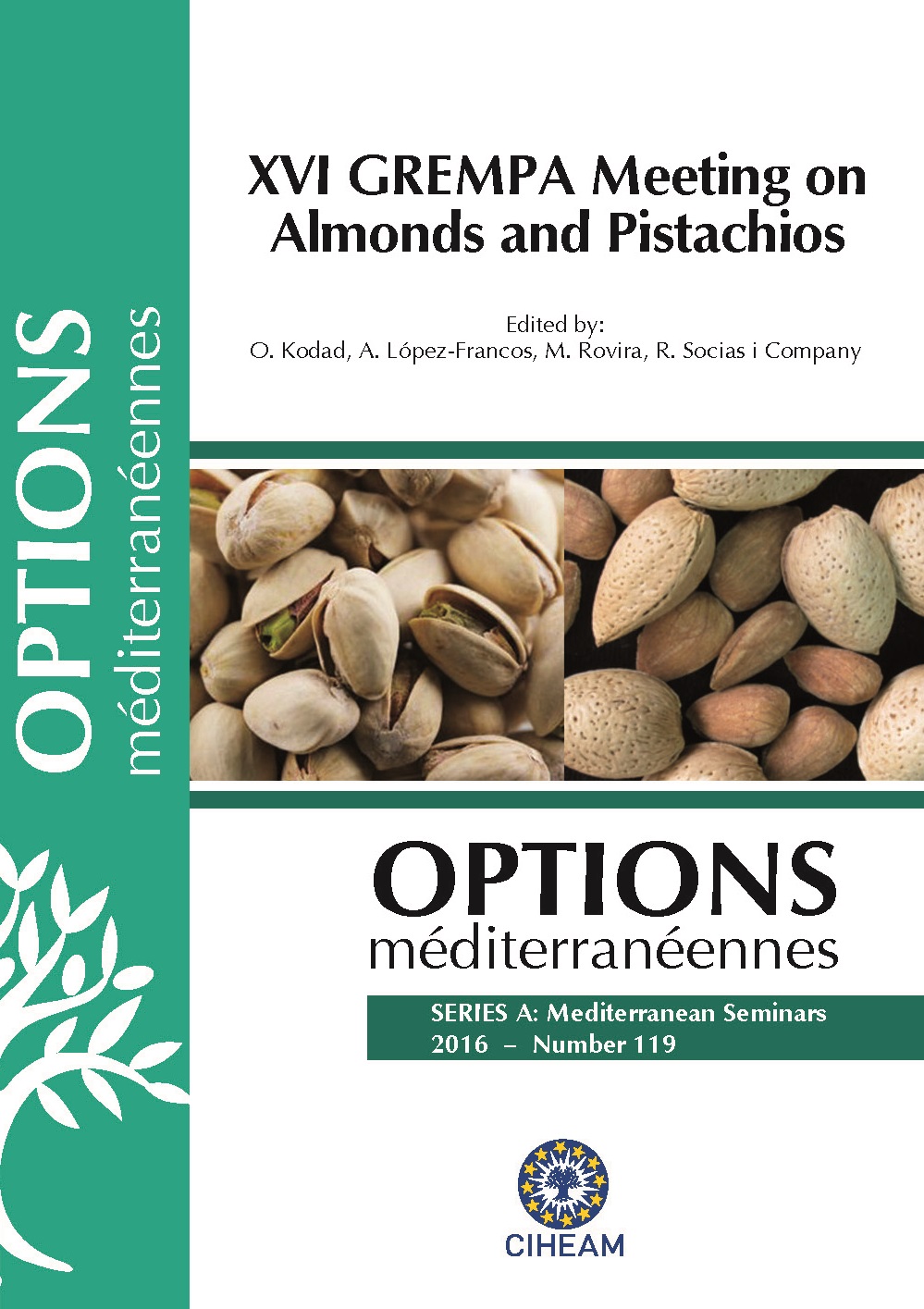| Article précédent | p. 247-251 | Article suivant |
Climate change and vulnerability of the pistachio and almond crops in the Mediterranean arid areas
Almond and Pistachio are the most important nut crops in Tunisia. The main production areas are located in the central and southern part of the country, characterized by scarce precipitations and harsh environments. Low and highly variable yields are commonly observed under those conditions. Nut crops are reported to be vulnerable to temperature fluctuations and decreasing water availability. In this study, yield response of almond and pistachio to global warming is evaluated under the arid conditions of Tunisia. The approach is focussing on chilling and its incidence on yield, using various chilling accumulation models. On the basis of 35 years of daily climatic data (1980-2014), results show a declining trend in winter chill units. Pistachio yields varied between 0 and 35 kg/tree and were affected by chill accumulation. Yields for three almond cvs varied within similar ranges but seemed to be less affected by warm winters, whereas one variety seemed to be non responsive to chill conditions, probably because of high sensitivity to rainfall variations. With the prospects of global warming, increasing temperatures are expected to be detrimental to nut cultivation in arid Tunisia; unless efforts are deployed to grow the appropriate cultivars.
Les cultures d’amandier et du pistachier occupent une place importante dans le système de production du centre et du sud tunisiens. Elles sont conduites en pluvial sous climat aride. Des rendements faibles et très variables ont été réalisés sous ces conditions sévères. Ces cultures ont été signalés être vulnérables aux fluctuations de température et à la diminution de la disponibilité en eau. L’évaluation des risques imposés par le changement climatique en particulier pour les cultures des régions marginales de la Tunisie centrale est d’un grand intérêt. Les rendements de l’amandier et du pistachier ont été évaluées par rapport aux variations de température et de précipitation. L’impact du froid hivernal a été analysé et différent modèles d’estimation du froid ont été utilisés. Les résultats d’analyses des données climatiques sur 35 ans (1980-2014) ont révélé une tendance décroissante de l’accumulation du froid. Les rendements du pistachier ont varié entre 0 et 35 kg/arbre et ont été affectés par le manque du froid. Les performances des variétés d’amandier ont varié dans les mêmes ordres de grandeur et semblaient peu affectées par les hivers doux, alors qu’une variété paraissait plutôt sensible aux variations des précipitations que des accumulations du froid. Avec les perspectives du réchauffement climatique, la hausse des températures pourrait limiter le développement des cultures des fruits secs; moins que des efforts seront déployés pour valoriser les ressources génétiques appropriées.
- [ Afficher ]
- [ Télécharger ]
- [ Exporter la citation ]
Vous pouvez télécharger la citation au format :
- [ Imprimer ]
-
Mots-clés
PISTACIA VERA, PRECIPITATION, PRUNUS AMYGDALUS, ZONE ARIDECiter cet article
Ghrab M., Ben Mimoun M., Masmoudi M.M., Ben Mechlia N. Climate change and vulnerability of the pistachio and almond crops in the Mediterranean arid areas. In : Kodad O. (ed.), López-Francos A. (ed.), Rovira M. (ed.), Socias i Company R. (ed.). XVI GREMPA Meeting on Almonds and Pistachios. Zaragoza : CIHEAM, 2016. p. 247-251. (Options Méditerranéennes : Série A. Séminaires Méditerranéens; n. 119). 16. Meeting of GREMPA (Groupe de Recherches Méditerranéennes pour l\'Amandier et Pistachier / Mediterranean Research Group for Almond and Pistachio), 2015/05/12-14, Meknes (Morocco) . http://om.ciheam.org/om/pdf/a119/00007401.pdf



